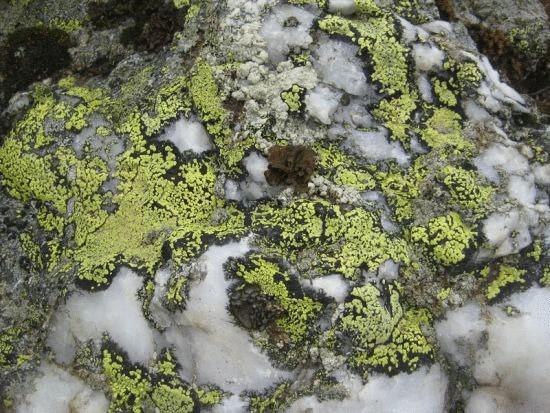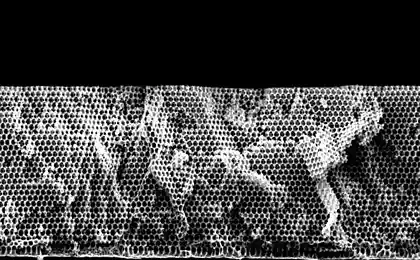571
Mosses, algae and lichens purify the air and improve soil fertility
The presence within the "concrete jungle" of such specific forms of vegetation, like mosses, lichens and algae are traditionally considered undesirable, and the locals did not welcome. As a result, they are carefully "cut" from the chosen roof and wall. Meanwhile, recent studies have shown that the prejudice against him is not too justified – in addition to the visible damage, the tiny plants bring not so obvious, but tangible benefits.

Scientists of Institute of chemistry of the max Planck (Max Planck Institute for Chemistry, Mainz, Germany) found that unattractive vegetation can extract from the atmosphere, to bind and hold huge quantities of carbon dioxide and nitrogen. The share of so-called "tenebrionid" plants cryptogams – half of the natural processes of nitrogen fixation, held on the land, and the amount they absorbed carbon dioxide, comparable to emissions from burning of biomass throughout the year. The data obtained revolutionize our understanding of the circulation of substances in nature and forced to reconsider climate calculations, where the balance of nitrogen and carbon in cryptogamic plants still have not been paid sufficient attention.
The role of forests and oceans in climate formation, maintaining the cycle of oxygen, carbon and nitrogen repeatedly became a subject of studying of specialists, dedicated to her many scientific papers. However, the effect on the circulation of nitrogen and carbon, and the balance of carbon dioxide terrestrial (aerial) algae, lichens and mosses usually the calculation is not. And despite the fact that cryptogamic species, including blue-green algae (cyanobacteria) cover up to 30% of the earth's surface, including vegetation. Members selected by Carl Linnaeus groups of spore plants, to which he attributed "beszvetnaya" ferns, horsetails, moss, mosses, mushrooms, lichens and algae, can be found practically in all ecosystems. Presenting one of the oldest forms of life on Earth, today they are found on the trunks of trees and shrubs, walls, roofs, fences, boulders and rocks – Yes, even on pavement or in the soil of drylands.

"We really wanted to find out which compounds cryptogamic plants emit into the atmosphere," — says Wolfgang Elbert, initiator research at the Chemistry Institute of max Planck. "We found a lot of works devoted to the ecological role of these life forms, but their contribution to carbon and nitrogen balance so far has not been considered." To evaluate this parameter, chemists have analyzed hundreds of samples, has attracted the cooperation of biologists and geologists. And as it turned out? Mosses and lichens absorb annually about 14 billion tons of carbon dioxide, and record more than 50 million tons of nitrogen.
The extent of the discoveries surprised as scientists-researchers of Mainz, and their colleagues from Kaiserslautern Technological University and Center for climate research in Frankfurt because the cryptogamic plants, it appears, absorb the same amount of CO2, which stands out due to the burning of forests and other types of biomass the whole year! Even more impressed with their amount of nitrogen, which cryptogamy, fixing, is returned to the soil available to other plants form.

"This is almost half of biologically fixed nitrogen on land, which is particularly important for ecosystems, as it is often the limiting nutrient. In addition, the absorption of carbon dioxide by plants is also often limited by the availability of nitrogen," — said leading specialist of the research group PECL Ulrich (Ulrich Pöschl).
Thus, the results of the study showed that plants, for convenience, collected under the title "cryptogamy" is an important source of nitrogen, indispensable to the poor in this nutrient ecosystems and arid regions. They play a significant role in maintaining the fertility and stability of soil.
Source: /users/104

Scientists of Institute of chemistry of the max Planck (Max Planck Institute for Chemistry, Mainz, Germany) found that unattractive vegetation can extract from the atmosphere, to bind and hold huge quantities of carbon dioxide and nitrogen. The share of so-called "tenebrionid" plants cryptogams – half of the natural processes of nitrogen fixation, held on the land, and the amount they absorbed carbon dioxide, comparable to emissions from burning of biomass throughout the year. The data obtained revolutionize our understanding of the circulation of substances in nature and forced to reconsider climate calculations, where the balance of nitrogen and carbon in cryptogamic plants still have not been paid sufficient attention.
The role of forests and oceans in climate formation, maintaining the cycle of oxygen, carbon and nitrogen repeatedly became a subject of studying of specialists, dedicated to her many scientific papers. However, the effect on the circulation of nitrogen and carbon, and the balance of carbon dioxide terrestrial (aerial) algae, lichens and mosses usually the calculation is not. And despite the fact that cryptogamic species, including blue-green algae (cyanobacteria) cover up to 30% of the earth's surface, including vegetation. Members selected by Carl Linnaeus groups of spore plants, to which he attributed "beszvetnaya" ferns, horsetails, moss, mosses, mushrooms, lichens and algae, can be found practically in all ecosystems. Presenting one of the oldest forms of life on Earth, today they are found on the trunks of trees and shrubs, walls, roofs, fences, boulders and rocks – Yes, even on pavement or in the soil of drylands.

"We really wanted to find out which compounds cryptogamic plants emit into the atmosphere," — says Wolfgang Elbert, initiator research at the Chemistry Institute of max Planck. "We found a lot of works devoted to the ecological role of these life forms, but their contribution to carbon and nitrogen balance so far has not been considered." To evaluate this parameter, chemists have analyzed hundreds of samples, has attracted the cooperation of biologists and geologists. And as it turned out? Mosses and lichens absorb annually about 14 billion tons of carbon dioxide, and record more than 50 million tons of nitrogen.
The extent of the discoveries surprised as scientists-researchers of Mainz, and their colleagues from Kaiserslautern Technological University and Center for climate research in Frankfurt because the cryptogamic plants, it appears, absorb the same amount of CO2, which stands out due to the burning of forests and other types of biomass the whole year! Even more impressed with their amount of nitrogen, which cryptogamy, fixing, is returned to the soil available to other plants form.

"This is almost half of biologically fixed nitrogen on land, which is particularly important for ecosystems, as it is often the limiting nutrient. In addition, the absorption of carbon dioxide by plants is also often limited by the availability of nitrogen," — said leading specialist of the research group PECL Ulrich (Ulrich Pöschl).
Thus, the results of the study showed that plants, for convenience, collected under the title "cryptogamy" is an important source of nitrogen, indispensable to the poor in this nutrient ecosystems and arid regions. They play a significant role in maintaining the fertility and stability of soil.
Source: /users/104























